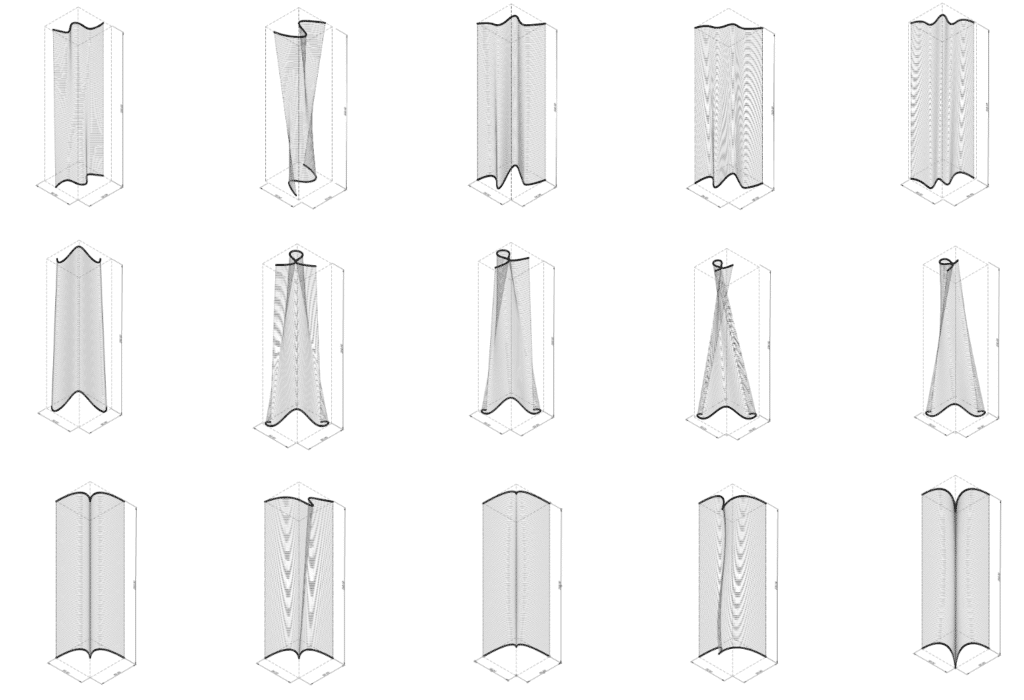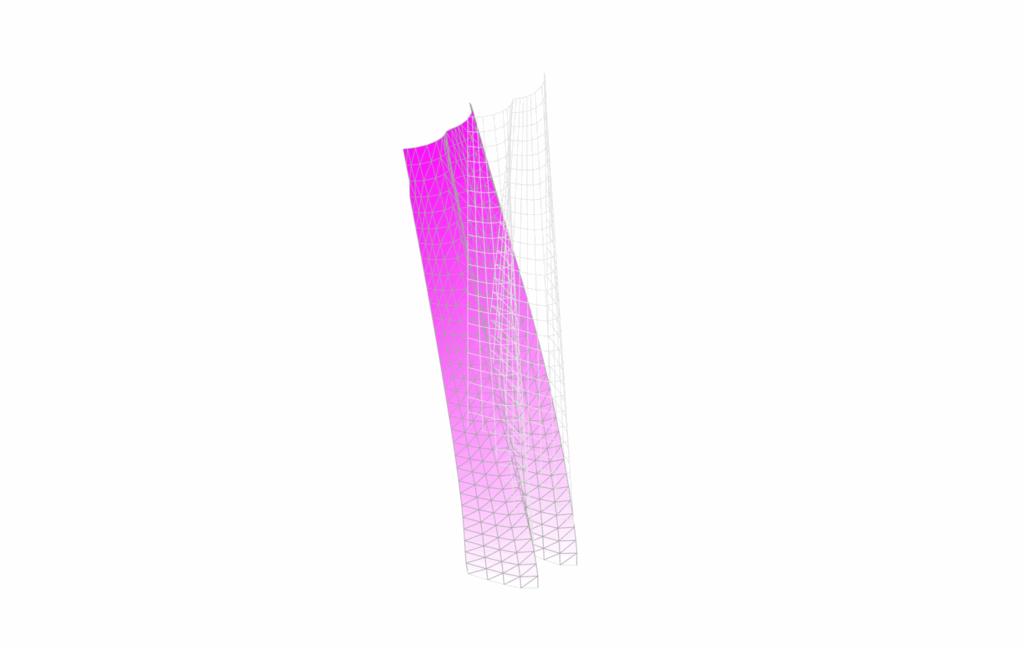This week, through a series of lectures by Alicia Huguet, students of the 3DPA pre-course were introduced to the physical concepts that relate to the mechanical properties of 3D-printed clay and earthen structures. Earthen materials perform well under compression but are weak in tension. Proper geometry has a critical influence on structural stability, allowing better control of compressive strength within the designed elements. The distribution of geometry has a greater impact on compressive strength than the total amount of material used. Through simulations, digital analyses and iterative testing, we were able to minimise tensile stress in our structural designs by identifying high-risk regions before printing, as well as developing an intuition for what geometries are likely to be successful.
The process unfolded as follows:
Each team developed a diverse catalogue of concepts and intuitive optimisations for achieving structural stability. Twisting, tapering, and widening profiles were selected for their variety of structural approaches.

Digital Analysis:
Once geometries were selected, they were analysed in Karamba layer by layer to simulate the printing process and identify potential weaknesses. Those with the fewest weaknesses were further studied using Grasshopper scripts to examine inertia and inclination. These tools enabled us to determine the most structurally viable geometries among all iterations.



Marianne Weber, Mohammed Aboeloyoon and Nacer-Eddine Azzoug
Testing and Optimisation:
We began with single curves defined by a maximum of seven control points to understand the basics. As the week progressed, we gradually introduced double-curve geometries to analyse how increased complexity influences stability. The selected single-curve, plus additional double-curve forms, were printed and compared with the simulation results. This step helped us interpret how varying geometric complexity affects structural stability and the success rate of smaller-scale prints. Finally, the optimised single-curve geometries were tested at 1:3 scale, still using clay material, to evaluate potential risks for full-scale (1:1) printing. Lastly, 1:1 scale print with earth was tested.

From this research, we learned the following:
Utilizing digital simulation tools
- Digital analysis tools like those used in this exercise, are helpful for learning and initial analysis, but they should be used with a critical eye, as they are merely simulations and therefore the printed structure may behave differently.
- It is crucial to thoroughly understand the simulation tools, as they can be misleading if not set up correctly.
Wider base sections increase the moment of inertia, improving resistance to buckling.
- Slender or irregular upper sections are more prone to twisting and local failures.
- Circular cross-sections perform best under vertical loads, while edge areas often initiate failures due to distance from the centre of gravity.
Printing and Scale Optimisation
- The printing scale strongly influences mechanical performance and stability. On a 1:1 scale, the local material material mass is greater, so local failures are more likely than global failure, as was mostly observed in 1:10 scale.
- Environmental factors (e.g., moisture) and equipment issues (e.g., nozzle force) can compromise build integrity.
- Double-curved geometries exhibit a larger moment of inertia, reducing the chance of centre of gravity drift and structural failure.
Failure Modes and Risks
- Collapse: Occurs when applied stresses exceed material strength.
- Stability failure: Caused by the centre of gravity movement beyond the moment of inertia limit.
- Overhang failure: Results from unsupported angles producing localised slumping.
- Machine-induced failure: Nozzle contact generates lateral shear stresses, which can increase with larger print scales.
- Small deviations or buckling in early layers often propagate, leading to larger positional errors and eventual collapse.
In conclusion
Theoretical background knowledge together with digital simulation tools and hands-on printing, proved to be an effective way to develop an intuition on how to optimise printed structures and identify potential points of failure before printing. This intuition is important to have when working with other aspects of 3D printing with earth to avoid possible problems down the road.

